-
Car Reviews
- All reviews
- Midsize SUVs
- Small cars
- Utes
- Small SUVs
- Large SUVs
- Large cars
- Sports SUVs
- Sports cars
- Vans
Latest reviews
- Car News
-
Car Comparisons
Latest comparisons
- Chasing Deals
Subaru’s long-standing family SUV comes in for a makeover, but don’t expect drastic changes to the Toyota RAV4 rival
The new Forester is a big deal for Subaru Australia. It’s the company’s best-selling car and, since the first generation arrived in 1997, has been providing reliable and capable mobility to Australian families.
We’re finally getting a proper spin in the new, sixth-generation car nearly two years later than its North American reveal and after a brief test locally back in May.
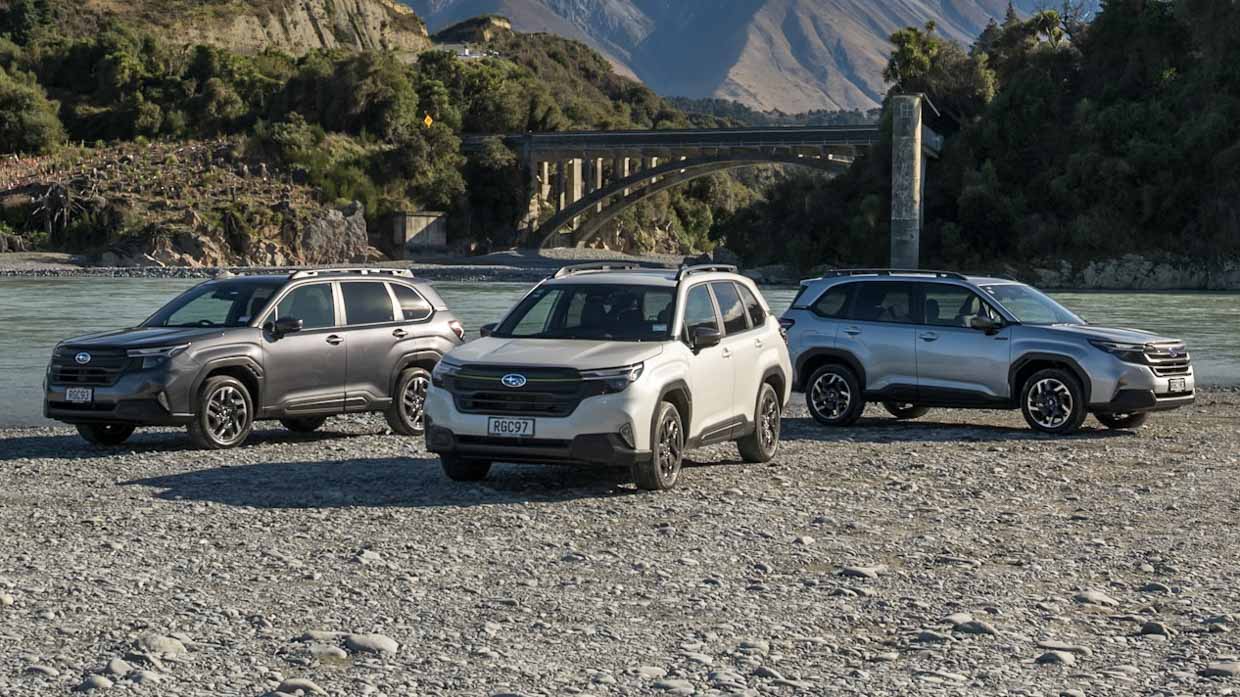
The first new Forester in seven years sits on the latest iteration of the Subaru Global Platform (SGP) boasting 10-percent body rigidity improvements, improved greater cabin space, and more technology.
Big news is that — at the cost of a full-size spare tyre and between $3000-$6500 — Subaru has fitted a new so-called ‘strong’ hybrid system to rival its mid-size, five-seat family SUV.
Chasing Cars jetted over to Christchurch, New Zealand, to sample both hybrid and petrol models on testing tarmac, dirt roads and even a few muddy tracks to challenge the symmetrical all-wheel-drive system.
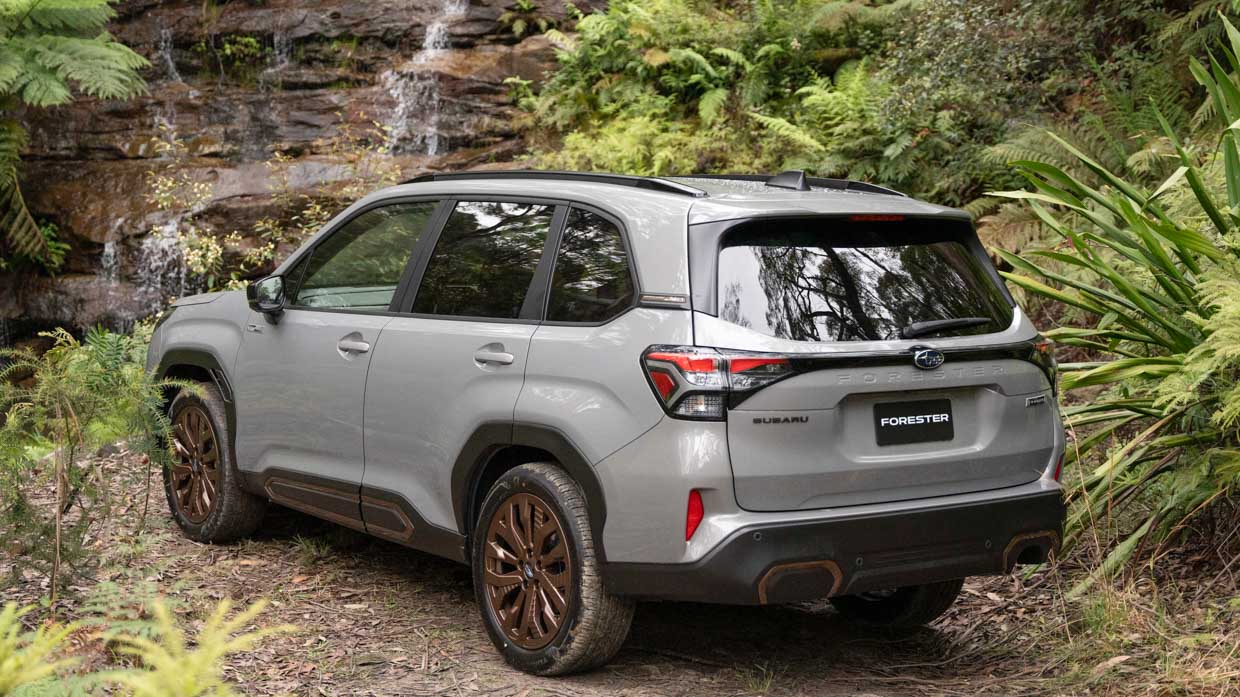
Front of mind are two main questions: where does the new Forester land among rivals such as the Toyota RAV4, Nissan X-Trail E-power, Hyundai Tucson hybrid, Haval H6 hybrid and others; and, has Subaru done enough to entice existing Forester owners to upgrade into its new, electrified model?
Subaru has not been ambitious in the Forester’s exterior or cabin redesign. It’s only 15mm longer and wider, not changing in height or wheelbase.
And yet, the new Forester has moved a fair way up the price scale. The old, all-wheel-drive Forester 2.5i base model cost $4800 less than the new AWD entry grade.
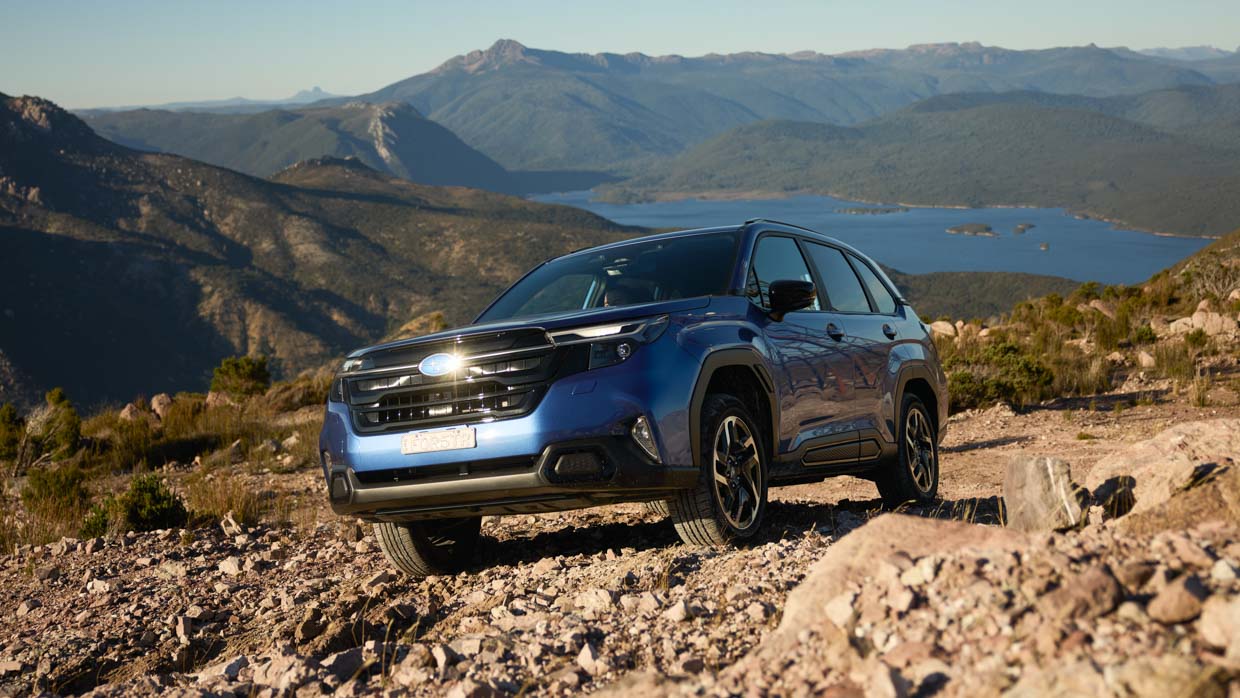
The base AWD gets tactile cloth upholstery for its four-way manual-adjust heated seats. A wireless charging pad is standard, as is a large 11.6-inch portrait touchscreen along with full exterior LED lighting.
You get the usual full-time AWD system Subaru’s known for, plus 18-inch alloy wheels with chubby, 55-series sidewall tyres. For $3000 more, Subaru will add the hybrid system — taking the AWD hybrid to $46,490, before on-road costs. A petrol-only Premium trim sits between, but it’s the Sport and Touring grades Subaru says are proving popular at launch.
The mid-spec Sport is the visual stand-out in the Forester range. Petrol models are paired with green highlights and contrast stitching; the hybrid’s easy to spot as it has ‘Stylish Bronze;’ accents on the lower body trim and matching 19-inch alloys, which may or may not be to your taste.
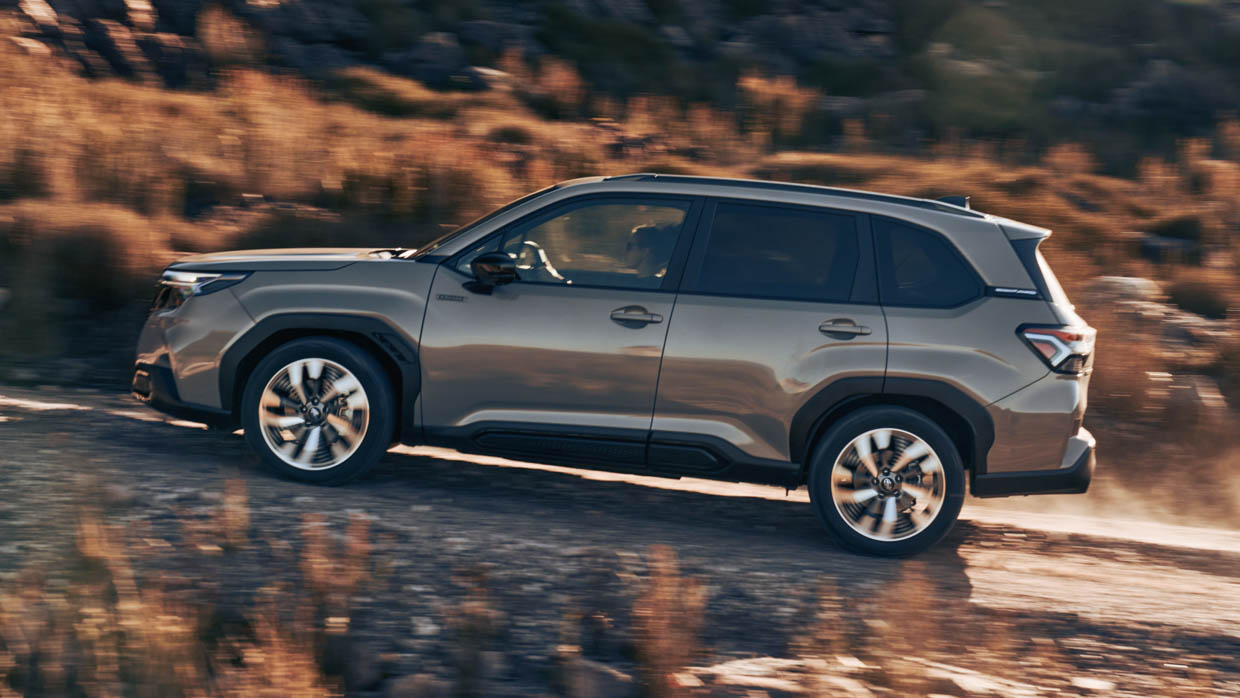
The petrol specification is quite different, so we’ll focus on the Sport hybrid, at $54,990, for this review. It moves to water repellant upholstery, gets power-adjustable heated seats, power-folding mirrors, a kick-to-open power tailgate, a 12.3-inch digital driver’s display, 10-speaker Harman Kardon sound system, and a generous panoramic sunroof.
The flagship $55,990 (before on-road costs) Touring hybrid scores grey 19-inch alloys, and Black or Brown leather-accented and Ultrasuede upholstery on the heated and ventilated seats.
To illustrate the Forester’s increased price, we’ve provided a non-exhaustive list of key rivals below:
At the core of this family SUV is a new hybrid powertrain. The 2.5-litre petrol flat-four is mated to a pair of electric motors, and a 1.1kWh lithium-ion battery under the boot floor.
One 90kW/246Nm electric motor is mounted before the ‘E-CVT’ transmission which uses planetary gears — not unlike Toyota’s RAV4 hybrid — and the second electric motor-generator works to harvest energy while decelerating, and as a starter motor.
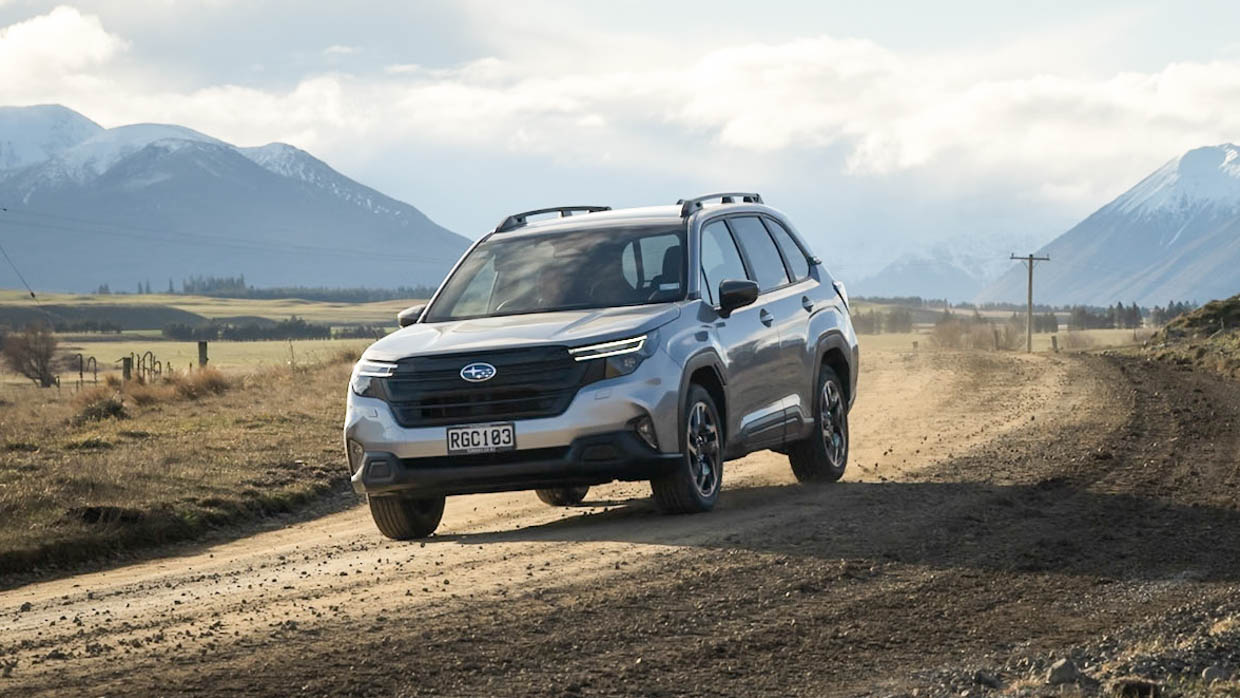
The Forester hybrid makes a combined peak power of 145kW, which is good for a 0-100km/h sprint around 9.5 seconds — though Subaru does not make an acceleration claim. It’s vocal doing hard acceleration, too.
Out on the road, the Forester can take off from the lights and spin up to around 30km/h in electric quietude. The powertrain can be locked in ‘EV’ mode but don’t expect to get very far — the Forester hybrid’s battery is good for a lap around a small carpark before the petrol motor kicks back in.
A few niggles at low speeds included a spongy and grabby brake pedal. The accelerator is touchier than we’d like, too. The Forester’s hybrid has a bit more kick once you’re up and running with the electric motor adding noticeable pep to step-off performance.
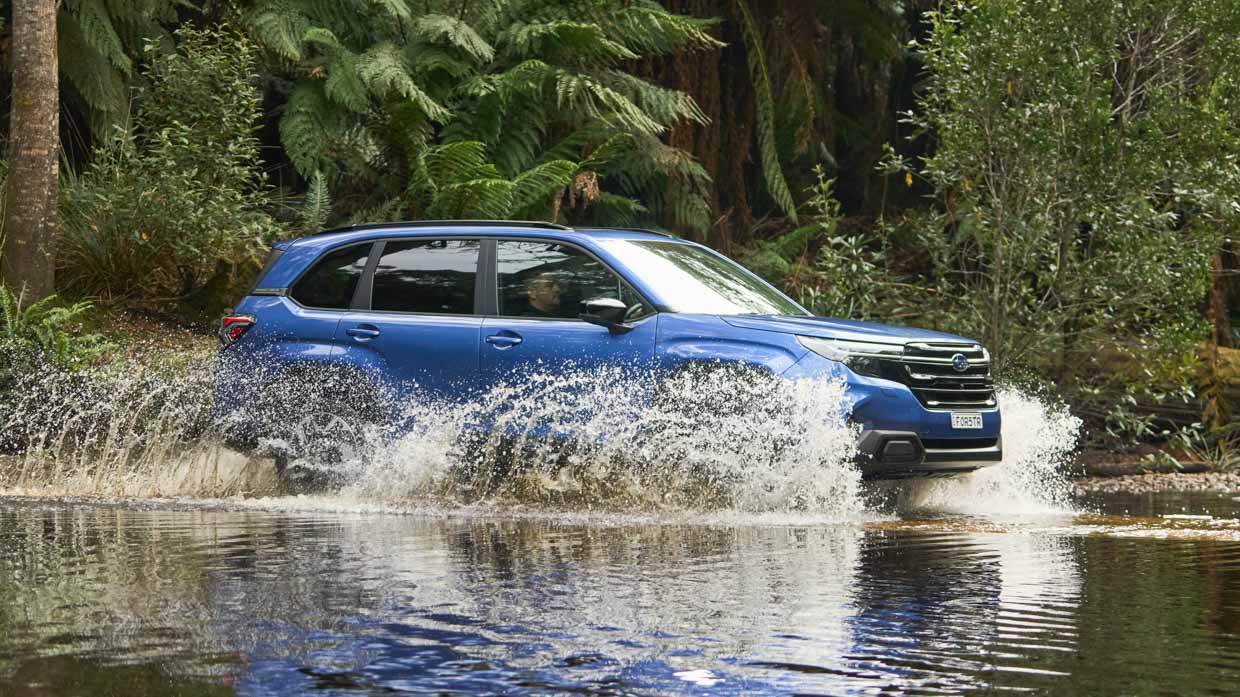
With a revised CVT transmission that has lower launch and higher cruising ratios, the petrol Forester makes a fair case for itself. With about 100kg less weight to lug around the performance difference between petrol and hybrid is smaller than you might expect, too.
Towing credentials are not strong for either powertrain, with the petrol rated to tow up to 1800kg braked and the Forester hybrid limited to 1200kg.
The Forester Sport is a bit of an odd-one-out in the range. Heavier steering and firmer suspension helping it resist roll through corners. The trade-off is stricter damping that can make the hybrid Sport’s ride busy.
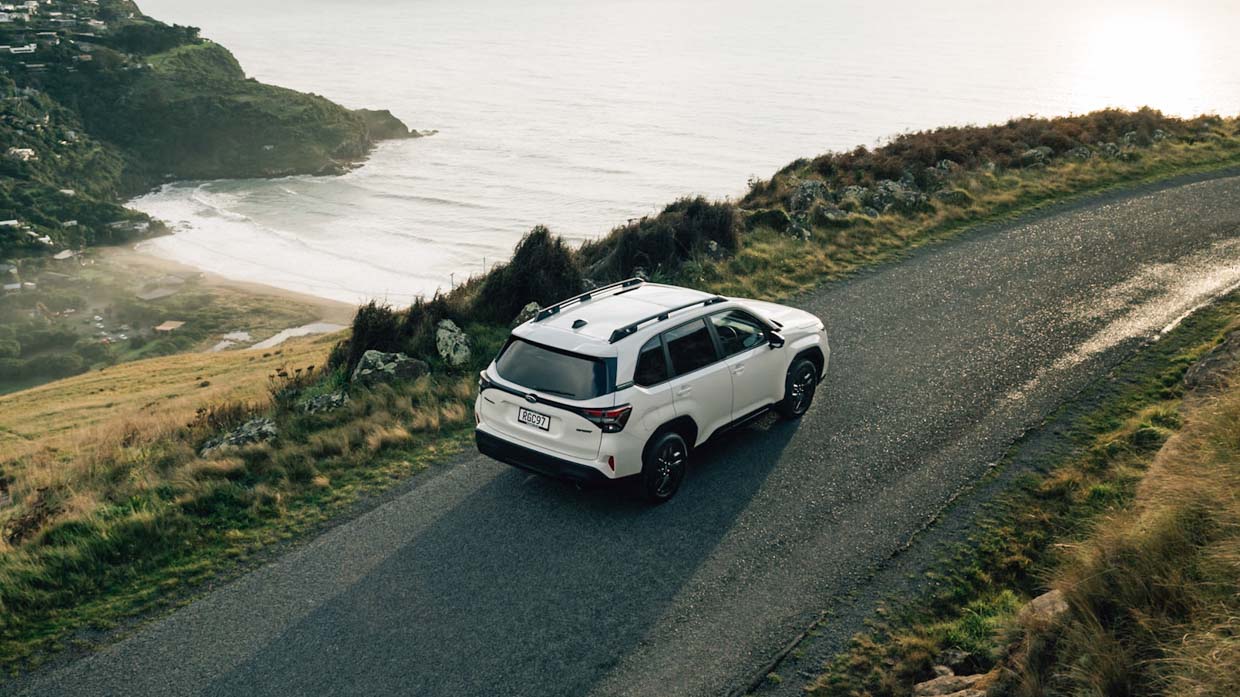
Other variants feel closer to the classic Forester recipe, and this is for the better. Softer suspension with more body movement (sometimes excessive at high speed) makes for a comfortable ride.
Despite not feeling sporty, the Forester has strong passive safety credentials. It corners well with a predictable balance, the ESC is tuned expertly for both sealed and unsealed surfaces, and it has a sure-footed stance on the road.
Subaru has hard-mounted seats to the chassis in the new car, rather than using brackets. It limits head-toss and gives the new car a more keyed-in feel than its predecessor.
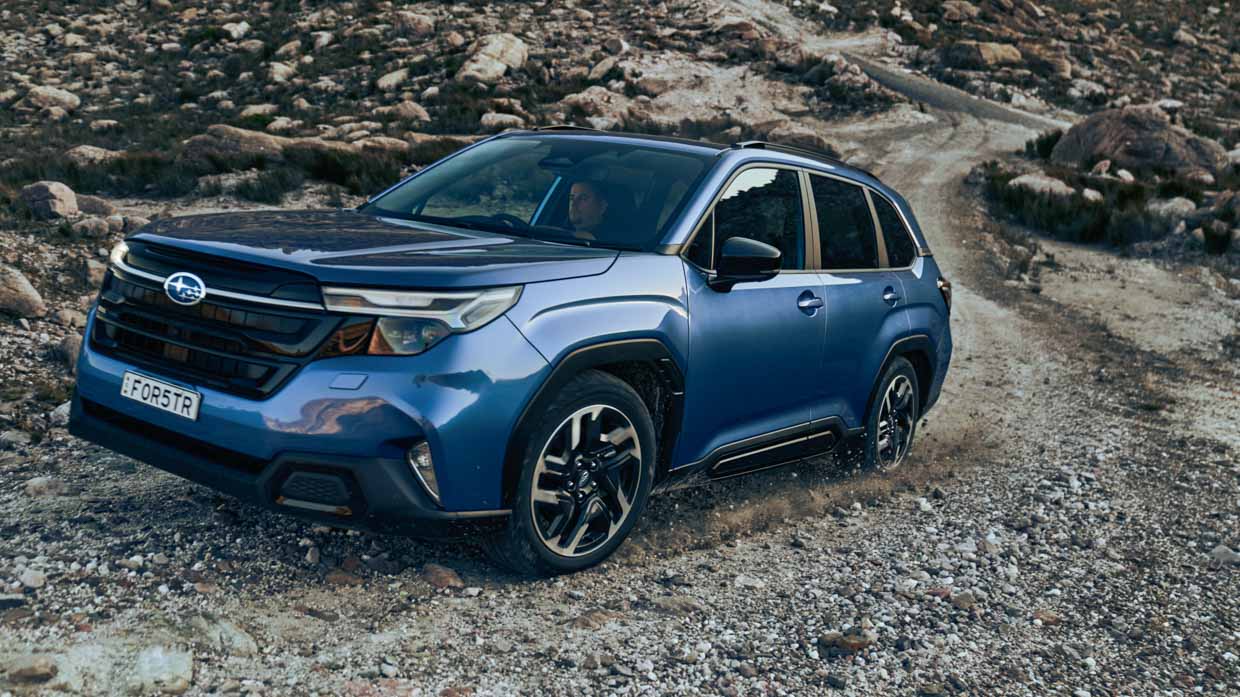
All of this means the Forester really is a pleasant car to lope through the countryside in — providing the road isn’t too tight and technical. It may carry speed, but the Forester doesn’t exactly pile it on.
Subaru’s signature symmetrical AWD means exploring off the beaten track can be a reality. Our route took in some private access roads which varied from freshly-surfaced to muddy and rutted.
Compliant suspension absorbed sharp-edged rocks and pot-holes well and with its X-Mode off-road traction control in Normal, the Forester wasn’t bothered by small streams or slippery hills. The Dirt/Snow program also proved useful, upping traction control and softening throttle response to limit unwanted wheelspin — Deep Snow/Mud did not come in handy.
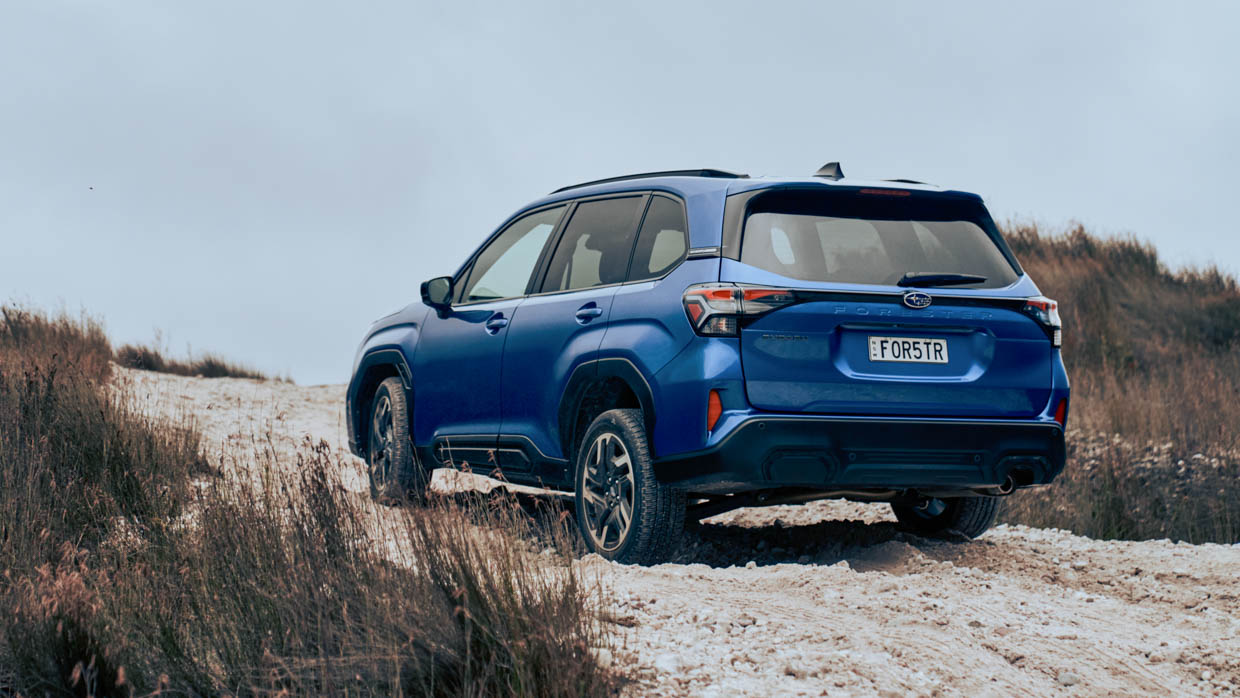
Coming down the other side of hills is a cinch thanks to X-Mode’s automatic hill-descent control. Approach/departure/breakover angles are 19, 19.3 and 24.7 degrees, respectively, and minimum ground clearance in 220mm. The Forester remains more capable than your average soft roader.
Subaru’s focus on cutting cabin noise has been fruitful as well. The Forester is not quietest in class — the Nissan X-Trail and Mitsubishi Outlander are more hushed — though it is a big improvement on the old, more tinny-feeling generation.
All this comes without sacrificing the Forester’s greatest strength: visibility. It retains remarkably thin A-Pillars, for a modern car, with a high roof and low belt line giving huge windows for a fishbowl-like experience in the cabin — handy when the 360-degree camera isn’t very clear.
Just like on the outside, the Forester’s interior is familiar. It has improved in its layout, with the roof-mounted array of switches gone in place of a central touchscreen as the command centre.
The 11.6-inch portrait-oriented screen supports wireless Apple CarPlay and Android Auto, and when you’re doing so it keeps key shortcuts for the HVAC and driver assistance at the bottom of the screen.
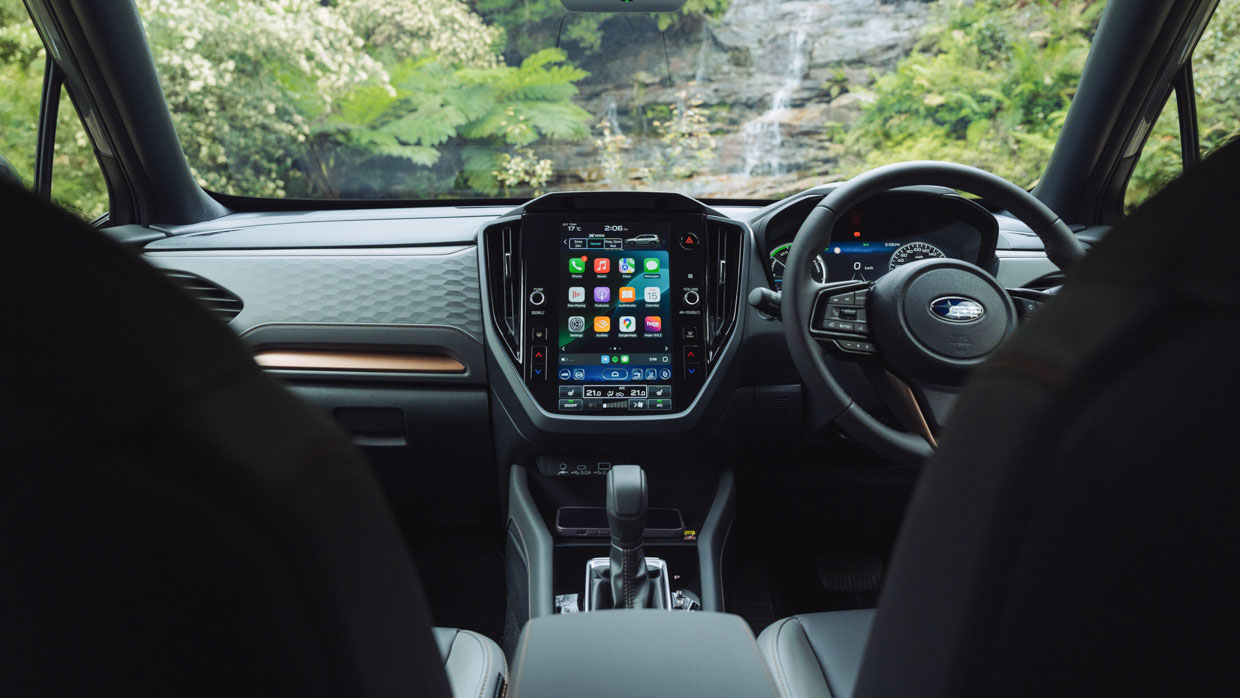
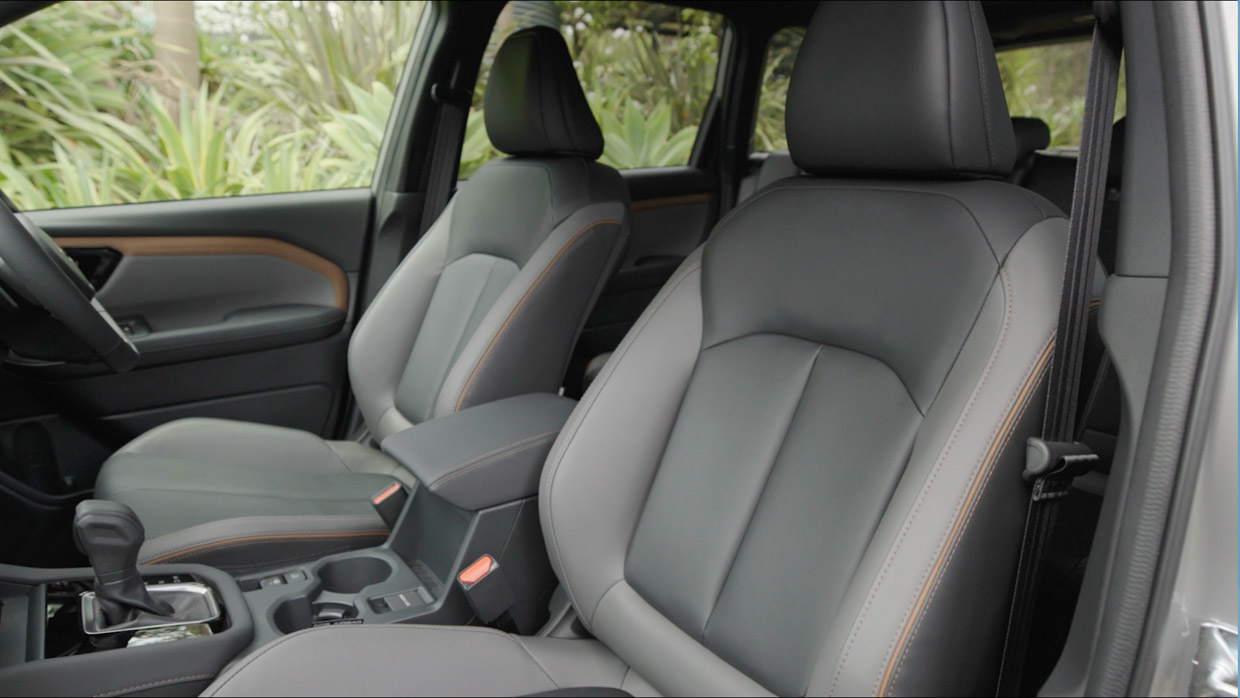
The Forester’s touch targets are large, too, making screen interaction fairly intuitive, if a little slow to respond. Annoyingly, the touchscreen picked glare from New Zealand’s low winter sun, making it occasionally difficult to see navigation directions.
The steering wheel keeps all of its buttons physical, which is nice, and there’s a bar atop the touchscreen with customisable widgets, including water temp, acceleration position, fuel economy, X-Mode, and more.
The base AWD’s six-speaker sound system is impressive. Functions for bass boost and clarity feature so you can tune it in nicely, while the 10-speaker Harman Kardon unit in Sport and Touring brings greater power and clarity.
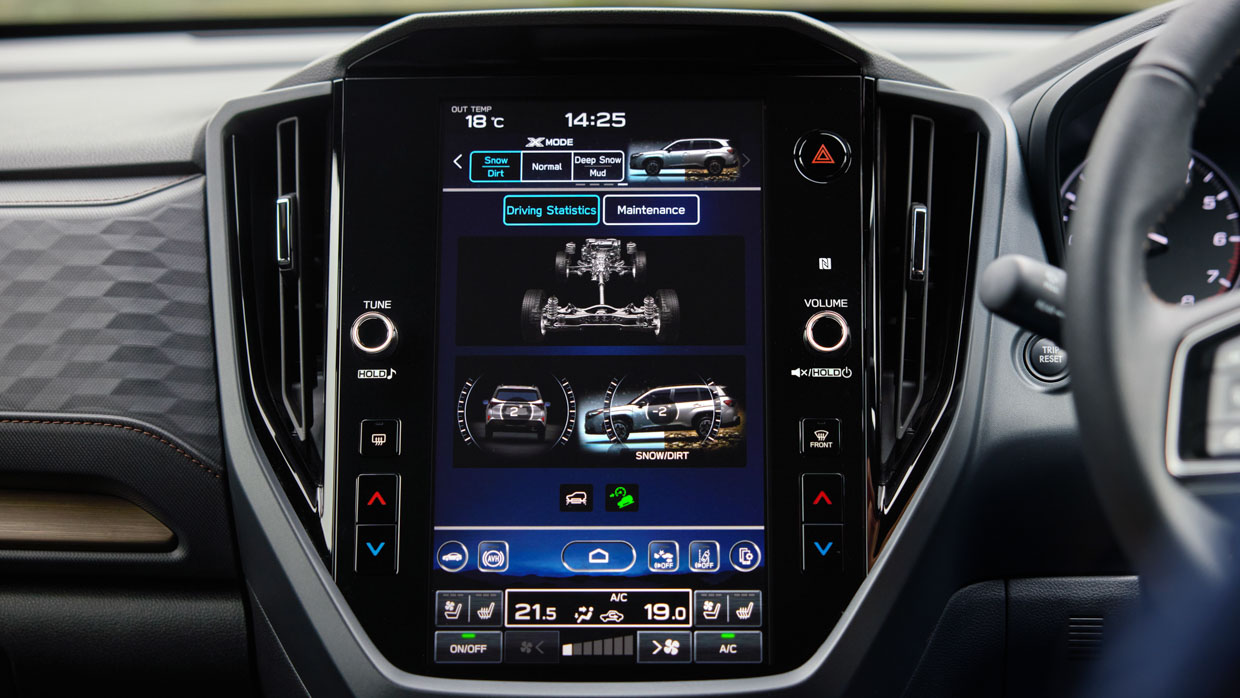
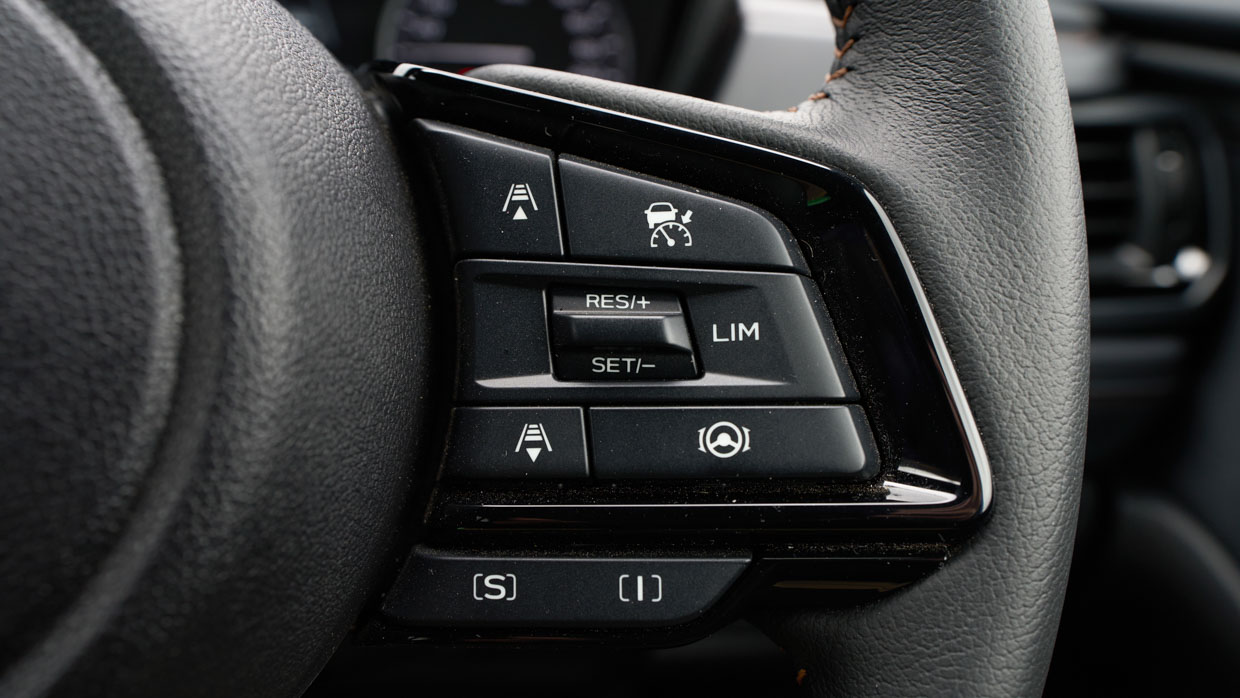
Material quality feels family friendly — not luxury. Hard-wearing plastics, with squidgy dash-top and front doors are appreciated, but just don’t expect a Mazda CX-5 or Nissan X-Trail style premium glow-up.
The Forester’s cabin is practical without being outstanding. Door bins will take a one-litre camping bottle, there are two cup-holders in the centre and a covered storage cubby under a squishy armrest. We’d prefer to see rubber bumpers for the wireless charging pad as phones repeatedly slipped out of the charging area even when driving gently.
Catering to those who haven’t jumped on the USB-C or Bluetooth bandwagons yet, Subaru fits both A and faster C ports in the front and back seats and has even kept an AUX port on the new Forester.
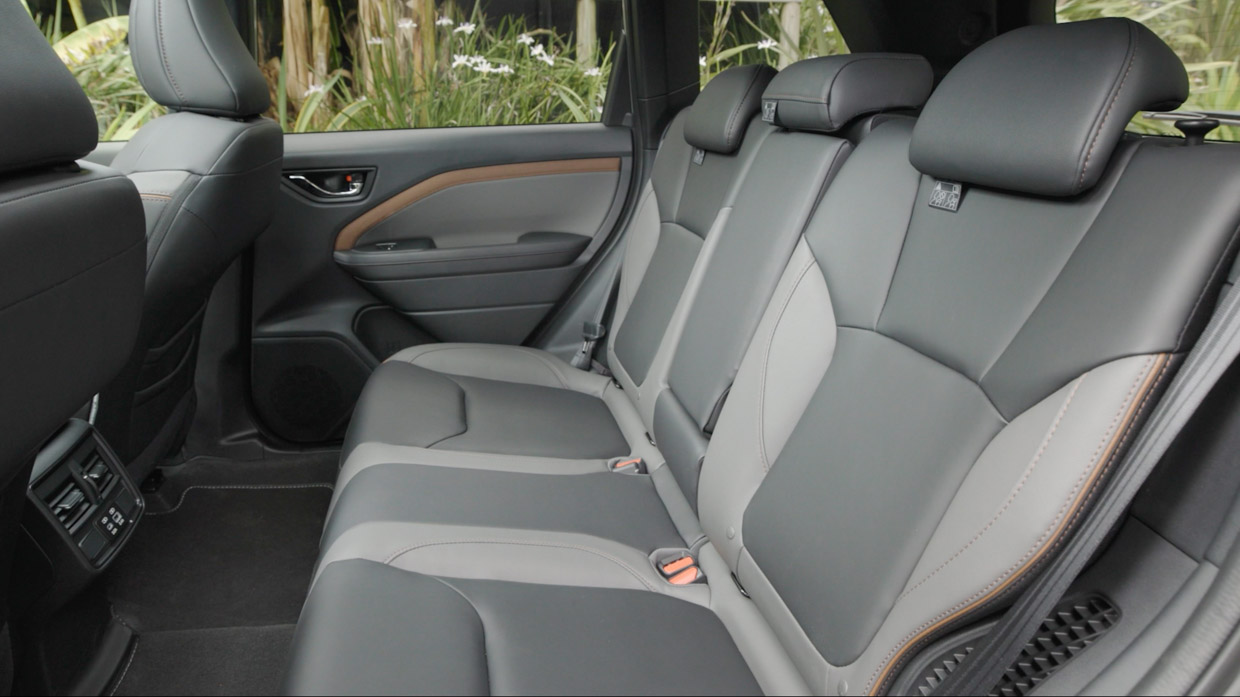
The seating position feels tall thanks to the low bonnet, even though really the front seats are set quite low. They’re comfortable, too, having been reprofiled to improve lower back support.
In the back seat, the Forester remains typically excellent, building on the great front visibility. Generous leg, tow and headroom for 180cm adults remains, as do large, square door apertures and vents for all trim levels.
The door caps are hard in the back, though, even in top-spec Touring. Additionally, no grade gets seat heating or sun-blinds, and the middle seatbelt is roof mounted. Only growing 15mm in width, the back seat is cosy for three adults.
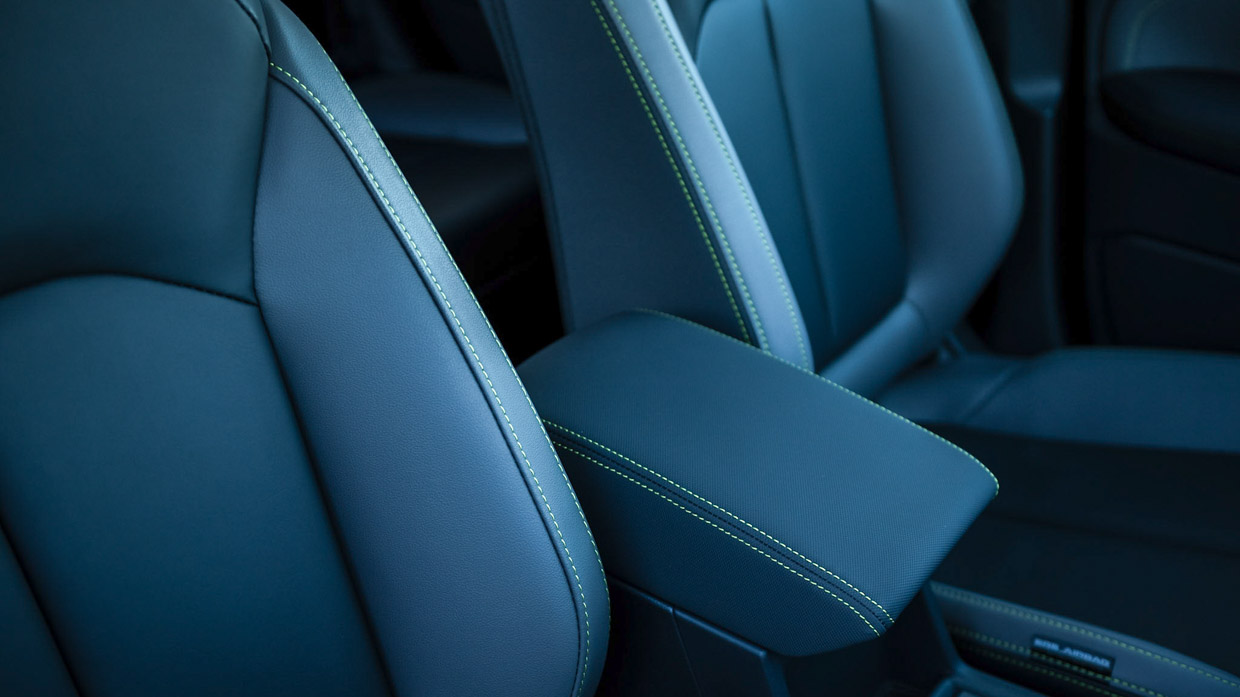
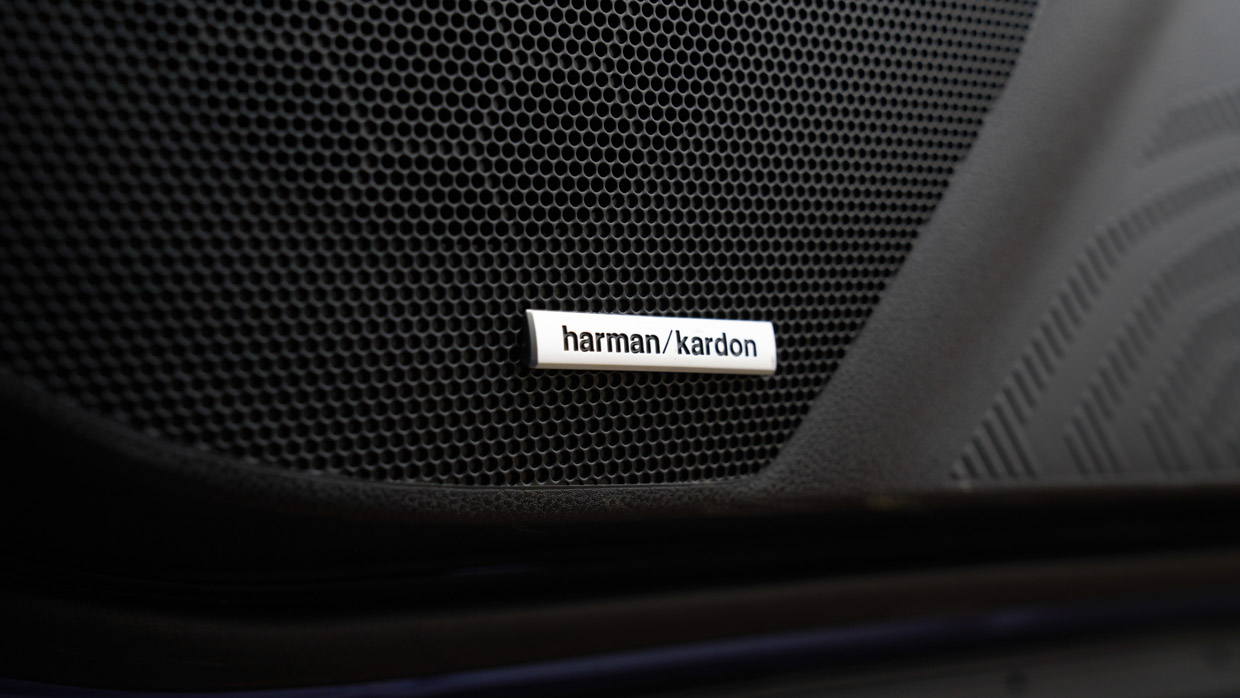
A fold-down armrest with two cup holders comes back in to save the day, and the second-row seat backs split fold 60/40 with remote power operation from the boot.
Cargo capacity is listed at 484L in the hybrid, growing to 1162L with seats folded and 1655 to the ceiling. The petrol-only Forester has a marginally larger boot at 496L, but all numbers are competitive in the class.
In a very strange move, though, behind the Sport/Touring’s standard power tailgate, no hybrid model features a temporary or full-size spare tyre. This is a big departure for a brand like Subaru that prides itself on rugged dependability and surety provided during long mixed-surface road trips.
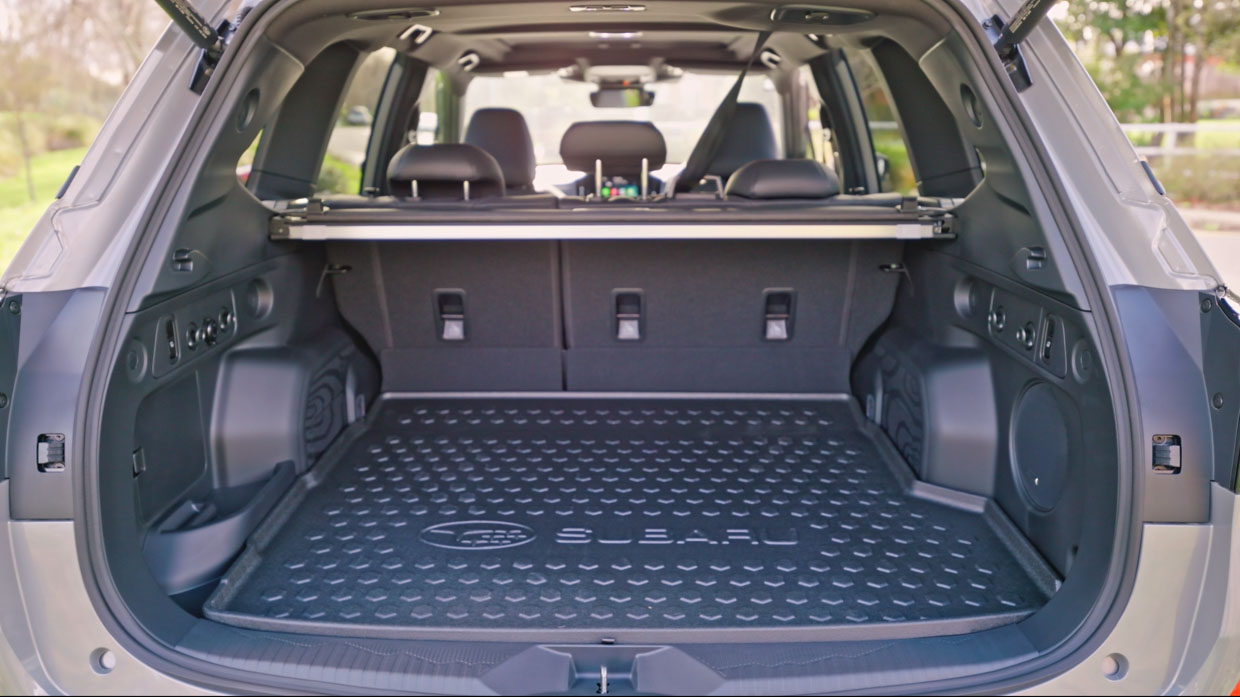
There are dealer accessories available, including an awkward tow-ball mounted spare. We’re told more offers are on the way, and Subaru Australia general manager Scott Lawrence seemed generally interested to hear input on other solutions to combat this issue.
Other amenities in the boot extend to four shopping bag books, a roll-back cargo cover, two LED lights and a 12-volt socket.
The Subaru Forester was recently awarded five stars in ANCAP safety testing. It scored 83 percent in Adult Occupant Protection, 91 percent for Child Occupant Protection, 86 percent in Vulnerable Road User Protection and 75 percent for Safety Assist.
One of Subaru’s pillars is safety, and along with passive features such as strong ESC, AWD grip and predictable road-holding, the Forester features Subaru’s latest camera-based Eyesight suite.
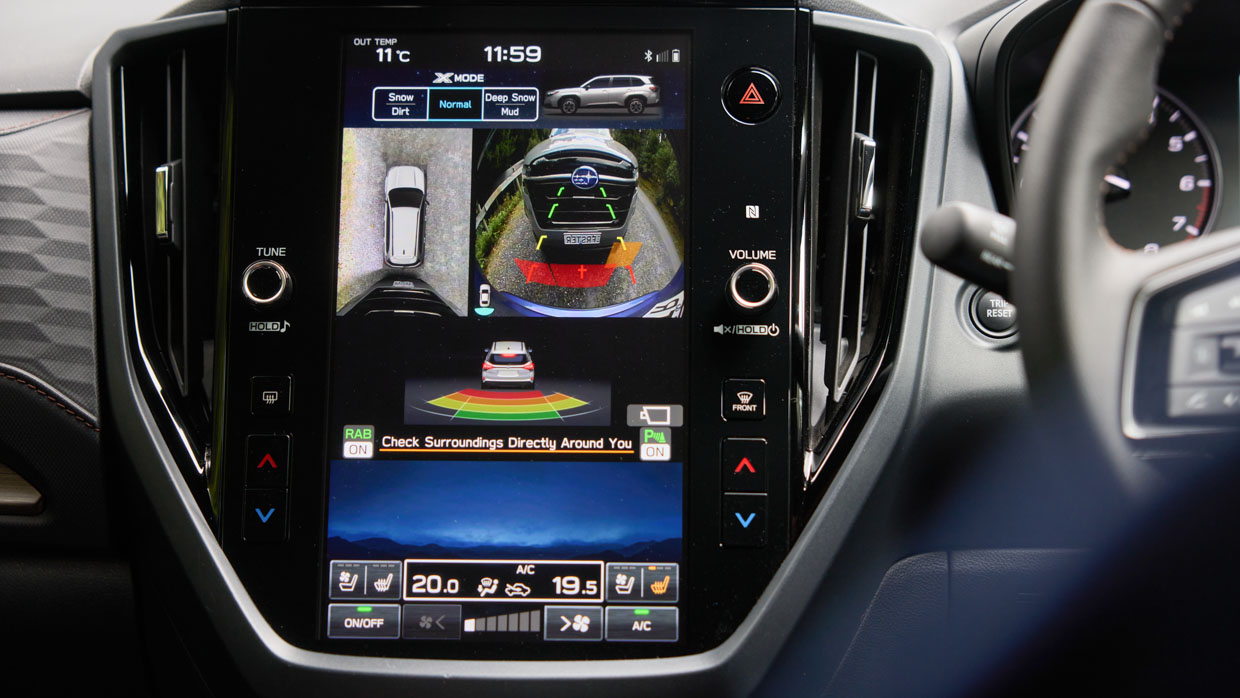
We were impressed by the natural adaptive cruise control that has a much more realistic follow distance than Toyota’s effort.
The lane-trace assist semi-autonomous function worked well, too, with speed sign detection able to automatically adjust cruise speed by seeing signs, if you want it to.
Not all was rosy, though. The lane-keep assist can be intrusive but it was the driver-attention monitoring we reached to turn off for every drive. It seemed to struggle with polarised sunglasses, and took a frustratingly long time to clear a distracted driver warning.
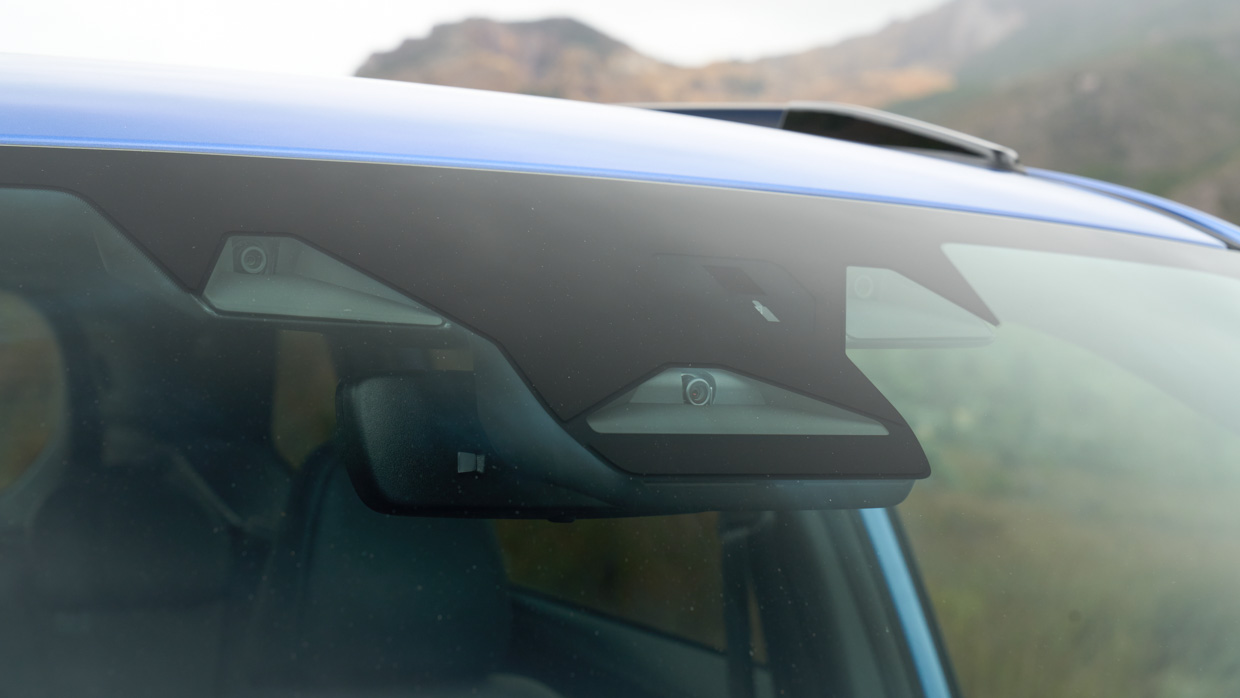
Subaru Forester active safety features:
How fuel efficient is the new Subaru Forester hybrid, then? The answer is better than the petrol, but still not by as much as we’d hoped. The official ADR combined rating is 6.2L/100km, a long way off an AWD RAV4 hybrid (4.8L/100km).
Subaru claims that the RAV4’s figure is unrealistic, but Chasing Cars long-term testing found Toyota’s numbers to be very close to the truth, regardless of driving style.
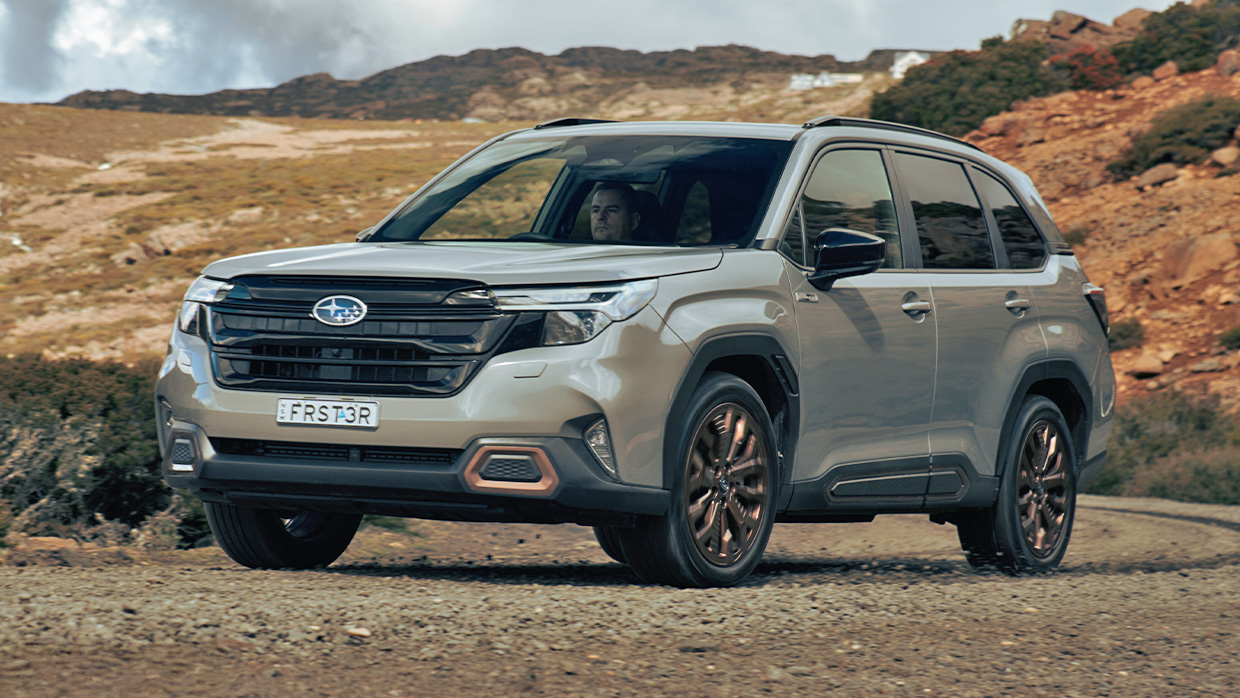
The Forester’s real world performance was disappointing on the first drive. Our first 50km of mostly suburban and motorway driving was showing 7.2L/100km, and after a 150km mix of flowing country roads and some gravel, the trip computer was at 7.5L/100km.
On the same run, petrol Foresters returned 8.5L/100km. So it is an improvement — just not by much. Ignoring the improved drivability, it would take around 200,000km of driving (about 13 years for the average Aussie) to offset the initial, higher purchase price as a buyer.
Subaru has improved its capped price servicing offer for the Forester following customer feedback. For all variants, maintenance is due every 12 months or 15,000km and will cost $2299 over five years — a circa $500 saving over the old car. The price is solid, though rivals including the RAV4 ($1350) and X-Trail ($1995) are cheaper.
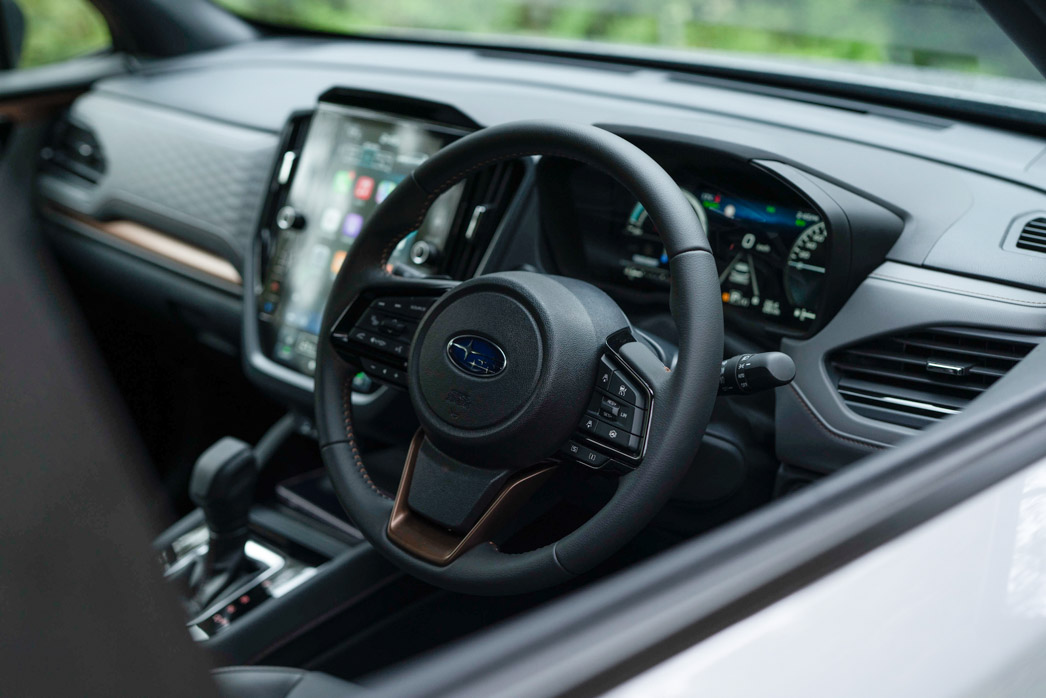
The Subaru Forester is covered by a five-year/unlimited-kilometre warranty in Australia.
It’s also worth noting Subaru’s mid-size SUV doesn’t come with modern smartphone integration and digital key systems that are becoming increasingly prevalent, and add an extra layer of interaction with the vehicle.
The new Subaru Forester hybrid is capable, comfortable, spacious…and slow. If that sounds familiar, it’s because this new-generation model is roughly the same recipe of every Forester that’s come before, only this time you get a mild improvement in efficiency.
This could be seen as a bad thing, but we don’t mean it as such. None of this is to take away the truth, that the Forester hybrid is a very good, well-developed, polished family vehicle.
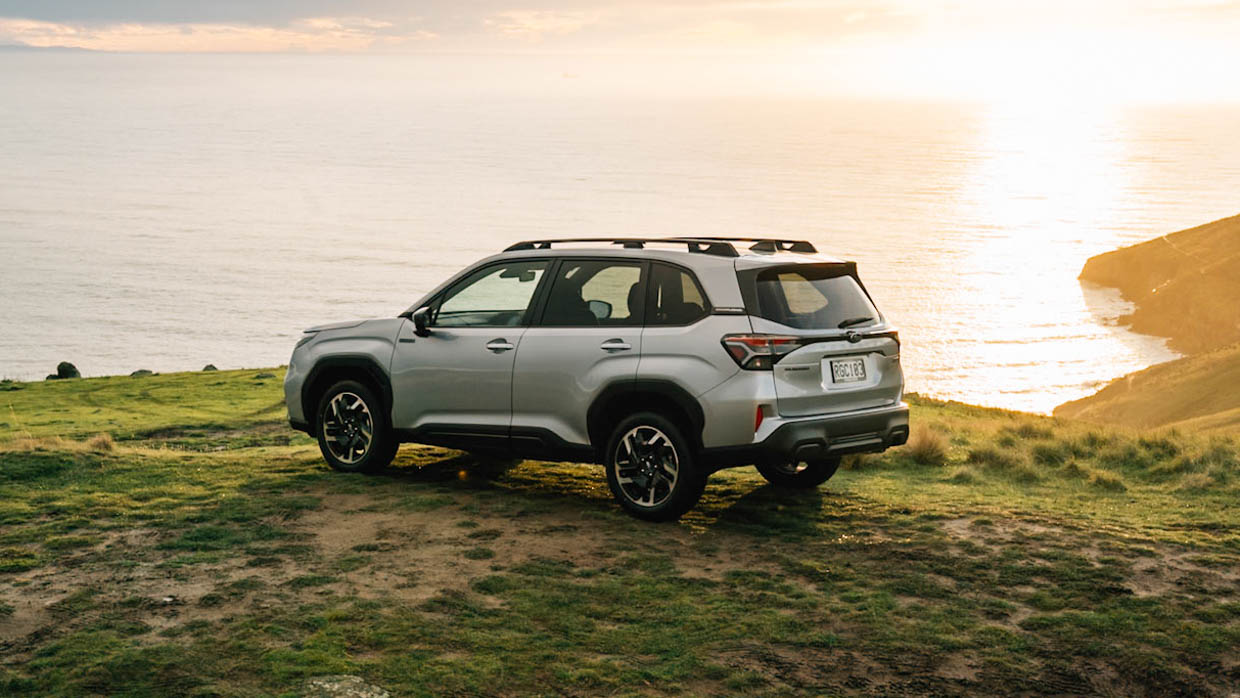
Unlike so many other things in the world, the Forester hasn’t abandoned its roots — it hasn’t started again from scratch and thrown out all the good.
The Forester doesn’t instantly jump to the top of the class, though. And we think the pricing — at launch — is optimistic. Perhaps rivals will jump in cost over the next few months and years and make the Forester a better value proposition on paper.
Our pick is the most affordable Forester AWD hybrid, it stays truest to form and has the lowest mark-up attached to going electrified.
Key specs (as tested)
About Chasing cars
Chasing Cars reviews are 100% independent.
Because we are powered by Budget Direct Insurance, we don’t receive advertising or sales revenue from car manufacturers.
We’re truly independent – giving you Australia’s best car reviews.
The estimate provided does not take into account your personal circumstances but is intended to give a general indication of the cost of insurance, in order to obtain a complete quote, please visit www.budgetdirect.com.au. Estimate includes 15%^ online discount.
^Conditions Apply
Budget Direct Insurance arranged by Auto & General Services Pty Ltd ACN 003 617 909(AGS) AFSL 241 411, for and on behalf of the insurer, Auto & General Insurance Company Limited(ABN 42 111 586 353, AFSL 285 571).Because we don’t know your financial needs, we can’t advise you if this insurance will suit you. You should consider your needs and the Product Disclosure Statement before making a decision to buy insurance. Terms and conditions apply.
Indicative quote based on assumptions including postcode , 40 year old male with no offences, licence suspensions or claims in the last 5 years, a NCD Rating 1 and no younger drivers listed. White car, driven up to 10,000kms a year, unfinanced, with no modifications, factory options and/or non-standard accessories, private use only and garaged at night.
^Online Discounts Terms & Conditions
1. Discounts apply to the premium paid for a new Budget Direct Gold Comprehensive Car Insurance, Third Party Property Only or Third Party Property, Fire & Theft Insurance policy initiated online on or after 29 March 2017. Discounts do not apply to optional Roadside Assistance.
2. Discounts do not apply to any renewal offer of insurance.
3. Discounts only apply to the insurance portion of the premium. Discounts are applied before government charges, taxes, levies and fees, including instalment processing fees (as applicable). The full extent of discounts may therefore be impacted.
4. We reserve the right to change the offer without notice.